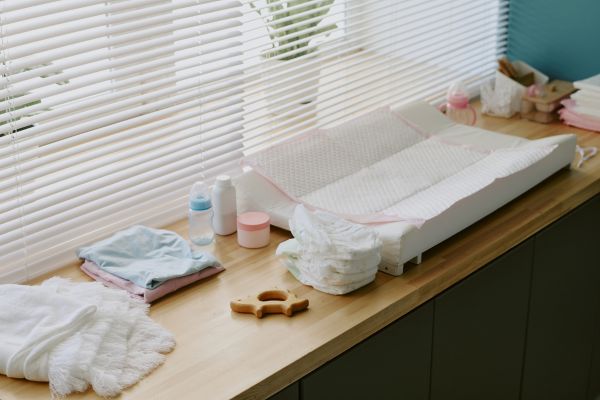When you think of a bouquet, what’s the first thing that comes to mind? Likely the roses, lilies, or maybe even tulips, right? But what about that dainty, cloud-like filler that often surrounds them, adding an ethereal touch? That’s right, we’re talking about baby’s breath. This modest yet captivating flower has been a staple in floral arrangements for centuries, lending its beauty to everything from weddings to rustic home décor. But baby’s breath isn’t just a filler flower—there’s more to this bloom than meets the eye.
In this comprehensive guide, we’ll dive into the history, symbolism, uses, and care of baby’s breath, proving why it deserves the spotlight all on its own.
What Exactly Is Baby’s Breath?
Baby’s breath, scientifically known as Gypsophila, is part of the carnation family. Native to Eurasia, this flower gets its name from its tiny, delicate blossoms that resemble clusters of soft baby clouds. Typically white, baby’s breath also comes in pink, yellow, and even purple varieties, though white remains the classic and most popular choice.
Its small size and light, airy appearance make it an ideal complement to bolder flowers. Yet, in recent years, baby’s breath has taken center stage in many minimalist and rustic designs. With its subtle charm, it’s a favorite for bridal bouquets, centerpieces, and even as a standalone bunch in a vase.
The Symbolism Behind Baby’s Breath
You might think of baby’s breath as just another flower, but it holds deep symbolism. Throughout history, this bloom has represented purity, innocence, and everlasting love. That’s why it’s such a popular choice for weddings and baptisms—it beautifully conveys the themes of love, new beginnings, and purity.
Baby’s breath is often associated with newborns and babies, not just because of its name but due to its soft, fragile appearance. It’s no wonder many baby shower decorations feature this flower. Beyond that, baby’s breath also symbolizes long-lasting love, making it a frequent pick for anniversary bouquets. Its longevity in floral arrangements also hints at the eternal love it represents.
Popular Uses for Baby’s Breath
While baby’s breath is traditionally seen as a filler flower, it has gained popularity as a standalone option in recent years. Its versatility extends across various styles and events, from weddings to home décor. Let’s explore some of the most common uses:
1. Wedding Bouquets and Arrangements
- Baby’s breath has become a go-to for wedding bouquets. Its delicate and romantic look pairs perfectly with almost any flower, but it also works beautifully on its own for a more understated and elegant bouquet.
- Baby’s breath can also be woven into flower crowns for brides and bridesmaids, adding a whimsical touch to the overall look.
2. Rustic and Minimalist Décor
- The rise of rustic and minimalist trends in interior design has boosted the popularity of baby’s breath. Simple arrangements in mason jars or vases provide a charming and timeless aesthetic.
3. Event Decorations
- From wedding arches to table centerpieces, baby’s breath adds a delicate touch to event décor without overwhelming the space.
4. Floral Crowns and Hairpieces
- Baby’s breath is lightweight and can easily be incorporated into hairpieces. Brides, bridesmaids, and even flower girls frequently wear baby’s breath floral crowns.
5. Dried Arrangements
- One of the unique aspects of baby’s breath is that it dries beautifully. Dried baby’s breath maintains its structure and appeal, making it a perfect addition to long-lasting arrangements or wreaths.
How to Care for Baby’s Breath
One of the best things about baby’s breath is its low maintenance. Whether you’re arranging it fresh or drying it for later use, it doesn’t require much care. Here are some simple tips:
- Fresh Baby’s Breath:
- Trim the stems at an angle before placing them in fresh water. Change the water every two days to ensure the flowers last longer.
- Dried Baby’s Breath:
- To dry baby’s breath, simply hang the stems upside down in a cool, dry place for about two weeks. Once dried, it will last for months, if not years.
- Storage:
- Keep dried baby’s breath away from direct sunlight, which can cause the flowers to fade. Store them in a cool area to prolong their beauty.
FAQs About Baby’s Breath
Q: Is baby’s breath toxic?
A: Yes, while it may look delicate and harmless, baby’s breath can be mildly toxic if ingested by pets or humans. Always keep it out of reach of children and animals.
Q: Can baby’s breath be dyed?
A: Absolutely! Many florists dye baby’s breath to match a specific color scheme. The flowers take on dye easily, making them a versatile option for colorful arrangements.
Q: How long does baby’s breath last?
A: Fresh baby’s breath can last up to a week with proper care, while dried baby’s breath can last for months or even years.
Q: What’s the best way to style baby’s breath?
A: Baby’s breath works beautifully in various arrangements, from bridal bouquets to simple, standalone bunches in vases. It pairs well with larger blooms like roses or peonies for a traditional look, or on its own for something more minimalist.
Q: Is baby’s breath a budget-friendly option?
A: Yes, baby’s breath is often more affordable than many other types of flowers, making it an excellent choice for budget-conscious brides or decorators.
Conclusion
Baby’s breath may often be overlooked, but its delicate beauty, symbolism, and versatility make it a flower that deserves a closer look. Whether you’re using it as a filler for your bouquet or giving it the spotlight in your home décor, baby’s breath offers a timeless elegance that suits every occasion. With minimal care, it can last for weeks or months, making it as practical as it is beautiful. So next time you’re planning a wedding, event, or even just looking for something to brighten up your space, don’t forget about the humble yet stunning baby’s breath.
For more information on floral arrangements and baby’s breath, visit the following authoritative sources:



